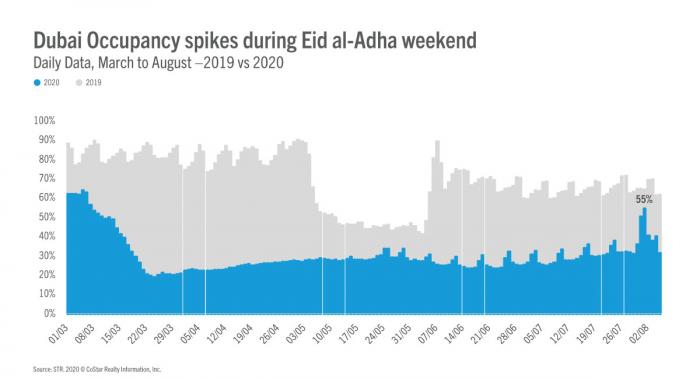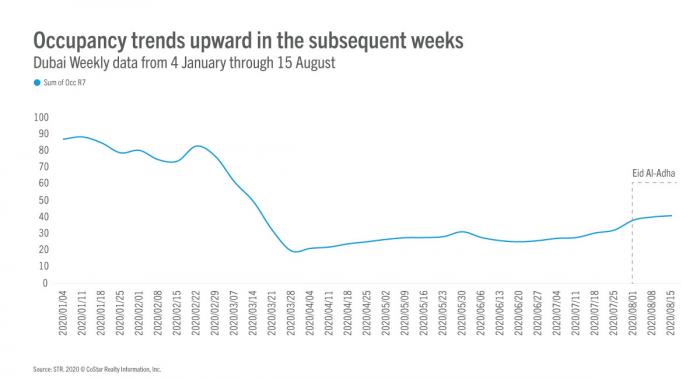As international travel finds itself in the everchanging crossfire of quarantine rules and COVID-19 case counts, staycations have become drivers of early occupancy gains that have emerged during the pandemic. Dubai, a hub of international travel, has seen a greater occupancy hit when compared with neighbouring markets, which made the strong occupancy increase over the Eid Al-Adha weekend even more heartening for accommodation providers in the market.
Dubai needs strong staycation performance more than most
Compared to other leading global destinations, Dubai “normally” requires a larger proportion of international travellers to fuel its accommodation sector. With the troubles that plague cross border travel in the COVID world, staycations will become the most reliable driver of occupancy for the foreseeable future.

